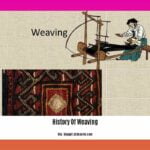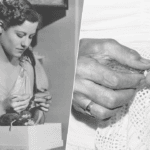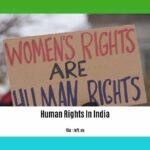Embark on a captivating journey through the annals of time as we unravel the rich tapestry of weaving looms in “The Rich Tapestry Unraveled: A Historian’s Journey Through the History of Weaving Looms.” Prepare to be enthralled by the intricate stories behind these remarkable contraptions that have played a pivotal role in shaping human history and transforming the world of textiles.
Key Takeaways:
Weaving has been practiced for thousands of years, initially for ropes and strings and later for thread spinning from the 4th millennium B.C. onwards.
Loom-based weaving, originating from basketry, emerged as early as the 7th millennium B.C. in Turkey.
The Industrial Revolution brought significant advancements in weaving technology, leading to the widespread adoption of automated looms for cloth production.
The Jacquard loom, invented in 1801, is a groundbreaking invention that uses punched cards to precisely control weaving patterns.
History of Weaving Looms:

From humble beginnings to mechanized marvels, the history of weaving looms is a testament to human ingenuity and the pursuit of textile excellence. These indispensable tools have undergone a remarkable journey, shaping the course of fashion, technology, and cultural expression. Let’s delve into the rich tapestry of their evolution.
Early Beginnings:
The story of weaving looms begins with the earliest forms of textile production. In the Neolithic era, around 7000 BC, humans crafted rudimentary looms using natural materials like animal bones or wood. These early devices allowed for the creation of simple fabrics from plant fibers, wool, or animal hair.
Ancient Innovations:
As civilizations progressed, so did the sophistication of weaving looms. The ancient Egyptians made significant advancements, utilizing vertical looms to produce intricate linen textiles. In India, weavers developed the horizontal loom, allowing for greater control over the weaving process.
Medieval Masterpieces:
During the Middle Ages, weaving looms became essential tools in the production of tapestries, carpets, and other decorative textiles. The invention of the drawloom, with its system of pulleys and cords, enabled weavers to create complex patterns and designs, often depicting scenes from mythology or history.
Industrial Revolution:
The Industrial Revolution marked a turning point in the history of weaving looms. The invention of the power loom, powered by steam engines, revolutionized the textile industry. These automated looms could produce vast quantities of cloth with greater efficiency and precision, leading to a dramatic increase in textile production.
Modern Advancements:
In the 20th century, the advent of electronics and computer technology brought further advancements to weaving looms. Electronic looms, controlled by computers, allowed for even more intricate designs and patterns, while also increasing productivity. Today, modern weaving looms are indispensable tools in the production of a wide range of textiles, from clothing to carpets.
Cultural Significance:
Weaving looms have played a significant role in shaping cultural identities around the world. Traditional weaving techniques and patterns are often passed down from generation to generation, preserving cultural heritage and expressing unique artistic traditions. From the colorful tapestries of the Andes to the intricate silk brocades of China, woven textiles have become symbols of cultural pride and craftsmanship.
As we move forward, the history of weaving looms continues to unfold, with new technologies and innovations emerging. The future of weaving holds the promise of even more sustainable, efficient, and versatile looms, enabling us to create textiles that are both functional and aesthetically pleasing.
- To learn about the traditional art form’s rich tapestry of innovation and cross-cultural influences, delve into the history of weaving.
- Embark on a journey to explore the history of welcome mats, from ancient Egyptian tomb paintings to modern-day designs, and discover their symbolism and functionality.
- Unravel the captivating history of Whoo, the renowned Korean skincare brand, and uncover the secrets behind its unique formulas and luxurious products.
Cultural Influences: Examining the impact of cultural exchange and migration on the development of weaving techniques.
Weaving looms, the ingenious contraptions that have woven the threads of history together, have not been immune to the dynamic forces of cultural exchange and migration. These phenomena have fueled a rich tapestry of innovation and exchange, leaving an indelible mark on the evolution of weaving techniques worldwide.
As people journeyed across continents, carrying their cultural heritage like a precious gem, they brought with them their weaving traditions, techniques, and designs. These interactions sparked a vibrant exchange of ideas, leading to the cross-pollination of weaving practices. The adoption and adaptation of foreign techniques enriched the local weaving repertoire, propelling the development of new and intricate designs.
Migrations, whether driven by trade, conflict, or the search for new horizons, played a pivotal role in the dissemination of weaving knowledge. Skilled weavers, carrying their expertise like a precious cargo, became agents of cultural transmission. They introduced their techniques to new communities, leaving a lasting legacy on the local textile traditions.
Cultural influences transcended geographical boundaries, weaving together diverse threads of tradition into a harmonious symphony. Techniques that originated in one corner of the world found a new home in distant lands, merging with local practices to create unique and vibrant expressions.
The impact of cultural exchange and migration on weaving techniques cannot be overstated. It fostered a vibrant tapestry of designs, techniques, and traditions, enriching the global textile heritage. These influences continue to shape the world of weaving, as weavers draw inspiration from the rich cultural diversity that surrounds them.
Key Takeaways:
Cultural exchange facilitated the cross-pollination of weaving ideas, leading to the development of new techniques and designs.
Migrations served as a conduit for the transmission of weaving knowledge, with skilled weavers introducing their expertise to new communities.
The fusion of diverse cultural influences resulted in a rich tapestry of weaving traditions, enriching the global textile heritage.
References:
Cultural change and the migration choice | Review of World Economics
The 5 Most Important Cultural Consequences of Migration
Regional Variations: Highlighting the diversity of weaving looms across the globe, showcasing unique designs and adaptations.

From Asia to Africa, Europe to the Americas, weaving looms have taken on diverse forms, each reflecting the ingenuity and cultural heritage of its region. Let’s embark on a journey across the globe, exploring the unique designs and adaptations that have shaped the world of weaving.
1. Asia: The Cradle of Weaving Traditions
Asia, the birthplace of weaving, boasts a rich tapestry of loom designs. The Chinese drawloom, a marvel of engineering, enabled the creation of intricate patterns that adorned imperial robes. In India, the pit loom, operated from a sunken pit, facilitated the weaving of delicate silks and carpets. Southeast Asia’s backstrap loom, carried by the weaver, produced vibrant textiles reflecting diverse ethnic groups.
2. Africa: A Tapestry of resilience
Africa’s weaving traditions are as diverse as its landscapes. The West African strip loom, with its vertical warp threads, produced narrow strips of cloth that were sewn together to create larger textiles. In Ethiopia, the traditional “shema” is woven using a frame loom, creating intricate designs that reflect the country’s rich cultural heritage.
3. Europe: A Legacy of innovation
Europe’s weaving looms have played a pivotal role in shaping the history of textiles. The Jacquard loom, invented in France, revolutionized weaving with its ability to create complex patterns using a punched card system. In England, the power loom, driven by steam power, ushered in the Industrial Revolution, transforming the textile industry.
4. Americas: A Fusion of cultures
The Americas, a melting pot of cultures, showcases a unique blend of weaving traditions. The Navajo loom, used by Native American tribes, produces vibrant blankets and rugs adorned with symbolic designs. In South America, the backstrap loom, brought by Spanish colonizers, is still used to create traditional textiles like the “manta” in Ecuador.
Key Takeaways:
Regional Variations in Looms: Weaving looms worldwide exhibit diverse designs and adaptations, reflecting cultural heritage and ingenuity.
Asia’s weaving traditions: Asia is home to a rich tapestry of loom designs, including the Chinese drawloom, Indian pit loom, and Southeast Asian backstrap loom.
Africa’s weaving traditions: Africa’s weaving looms showcase resilience, with notable examples like the West African strip loom and Ethiopian frame loom.
Europe’s weaving innovations: Europe has been at the forefront of weaving innovations, with the Jacquard loom and power loom revolutionizing the textile industry.
Americas’ fusion of cultures: The Americas showcase a unique blend of weaving traditions, including the Navajo loom and the backstrap loom, influenced by Native American and Spanish cultures.
References:
The Roots of Asian Weaving: The He Haiyan Collection of Textiles and Looms from Southwest China
Weaving on Looms: A Global Perspective
Modern Innovations: Discussing contemporary advancements in weaving technology, including computer-aided design and 3D printing.
Imagine the intricate tapestry of history meticulously woven together by the advancements in weaving looms. From humble beginnings to cutting-edge technology, let’s unravel some contemporary innovations in weaving that have revolutionized the textile industry.
CAD and 3D Printing: Revolutionizing Weaving Design
Computer-aided design (CAD) has become an indispensable tool for weaving designers, enabling them to envision and create complex patterns with precision and accuracy. CAD software allows designers to experiment with colors, textures, and weave structures virtually, reducing the time and resources required for sampling and prototyping.
3D printing technology has also made significant strides in weaving. By creating physical models of weaving patterns, designers can assess the drape, texture, and aesthetics of fabrics before committing to production. This technology facilitates rapid prototyping and enables designers to explore innovative structures and designs that were previously impossible.
Advanced Weaving Machines: Efficiency and Versatility
Modern weaving machines equipped with advanced technology have transformed the production process, enhancing efficiency and versatility. These machines incorporate intricate computer controls that precisely manage yarn tension, weaving speed, and pattern formation, ensuring consistent and high-quality fabric output.
Some notable examples include:
- Warping, Sizing, and Sample Weaving:
Rapid prototyping machines accelerate sample production and evaluation, enhancing efficiency before mass production.
Tying-In and Drawing-In:
Automatic drawing-in machines, like the Groz-Beckert WarpMasterPlus, streamline the weaving process, increasing productivity.
Narrow Weaving for Smart Applications:
The Jakob Müller AG NFM® narrow weaving machine with the Multi Directional Weaving (MDW®) device enables versatile and functional weaving.
Weaving Technologies:
Companies like Lindauer Dornier GmbH showcase air-jet and rapier weaving machines capable of producing diverse fabrics for various applications.
Three-Dimensional Weaving:
- Recent ITMA exhibitions have highlighted advancements in 3D weaving, demonstrating the growing interest in this technology.
Sustainability and Innovation: Weaving a Greener Future
Sustainability has become a driving force in the weaving industry, and innovative technologies are emerging to address environmental concerns. Some of these advancements include:
- Water-Saving Technologies:
Water-efficient weaving processes, such as air-jet weaving, reduce water consumption significantly.
Recyclable Materials:
Fabrics made from recycled materials, including plastic bottles and textile waste, are gaining popularity.
Energy-Efficient Machines:
- Modern weaving machines incorporate energy-saving features, reducing electricity consumption.
These innovations not only enhance weaving efficiency and versatility but also contribute to a more sustainable and environmentally friendly textile industry.
Key Takeaways:
CAD and 3D printing have revolutionized weaving design, enabling precise pattern creation and rapid prototyping.
Advanced weaving machines with computer controls enhance efficiency, versatility, and fabric quality.
Sustainability is a key focus, with technologies aimed at reducing water consumption, using recyclable materials, and improving energy efficiency.
Technological advancements in weaving continue to drive innovation in the textile industry.
Relevant URL Sources:
1. Innovation in Weaving
2. Recent Innovations in Jacquard Weaving Technology
FAQ
Q1: What factors contributed to the emergence of loom-based weaving?
A1: Loom-based weaving originated from basketry and emerged as early as the 7th millennium B.C. in Turkey, likely due to the need for more efficient and versatile fabric production.
Q2: How did the Industrial Revolution impact the history of weaving looms?
A2: During the Industrial Revolution, weaving technology underwent significant advancements, including the widespread adoption of automated looms for cloth production, which greatly increased efficiency and productivity.
Q3: What was the significance of the Jacquard loom in the history of weaving?
A3: Invented in 1801, the Jacquard loom was a groundbreaking invention that utilized punched cards to precisely control the patterns created during weaving, allowing for intricate and complex designs.
Q4: How has loom technology in Asia evolved over time?
A4: Loom technology in Asia has a rich evolutionary history, with all the major loom traditions in the region being related despite their apparent diversity, showcasing the interconnectedness of textile traditions across the continent.
Q5: What are some recent innovations in weaving technology?
A5: Recent innovations in weaving technology include advancements in warping, sizing, and sample weaving for efficient fabric manufacturing, the development of new automatic drawing-in machines, and the growing interest in three-dimensional weaving, which offers unique possibilities for fabric design and functionality.
- Star Ring Trends: Etsy vs Amazon - March 28, 2025
- Boost Pollinator Habitats: Baby Blue Eyes Sustainable Farming Guide - March 28, 2025
- Protect Big Black Bears: Effective Conservation Strategies - March 28, 2025
















